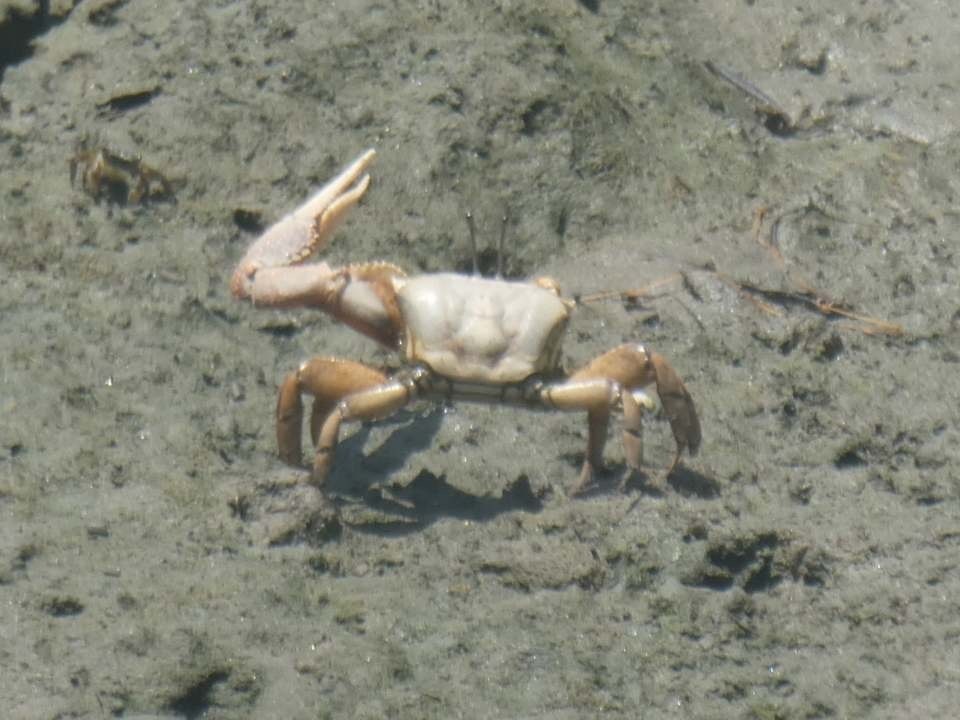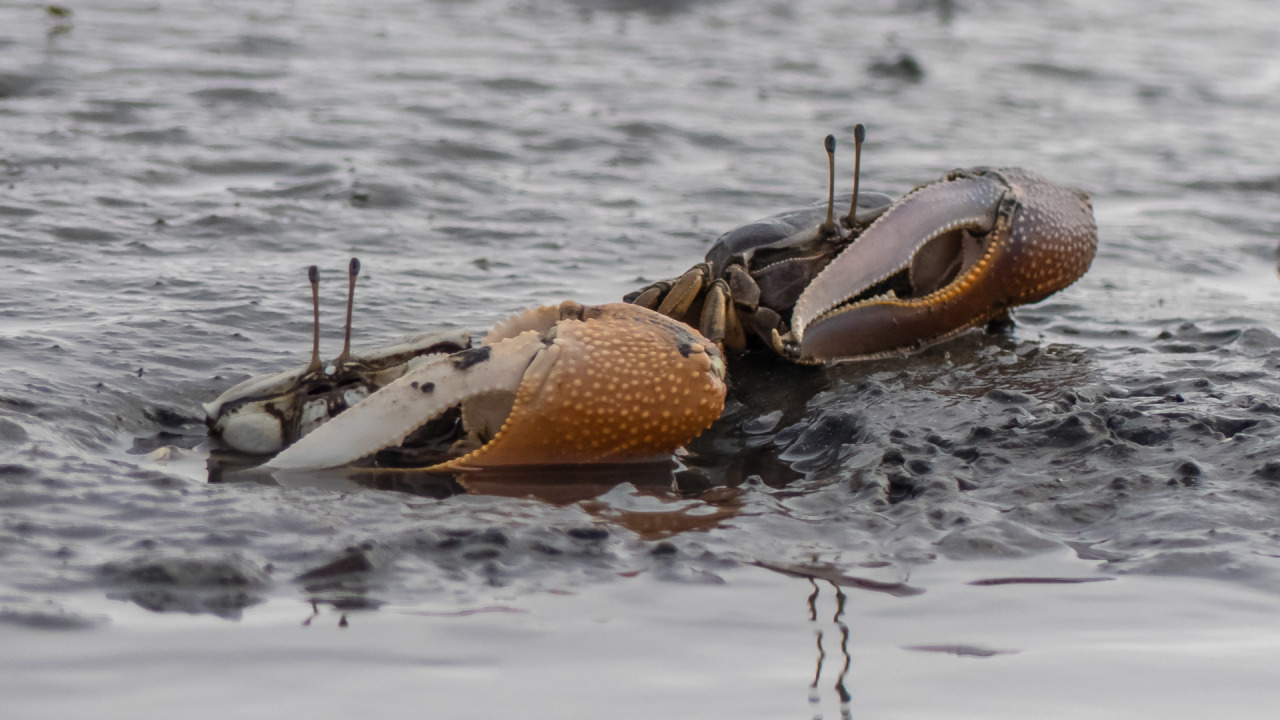
A common theme among iNaturalist users is that they might have started out with an interest in one or two taxa (e.g. birds or plants), but once they start opening their eyes to the life around them, their interests grow and diversify. I can personally attest to this as I am now stooping over to photograph lichens and slime molds when, not long ago, anything without scales or spinnerets was of little interest to me.
This past June, iNaturalist user @tracyk2 visited the Bolsa Chica Ecological Reserve in southern California to do some bird watching, but she also took notice of fiddler crabs scampering about on the beach. She snapped some photos and uploaded them to iNat, identifying them as Mexican Fiddler Crabs (Leptuca crenulata), a species that has been recorded in the area.
iNaturalist Co-direct Scott Loarie (@loarie) came across her observation and, drawing from Dr. Michael Rosenberg’s (@msr) comment here, believed at least some of her crabs to be Large Mexican Fiddler Crabs (Uca princeps), a species never before recorded in the United States. Scott then notified Michael about Tracy’s sighting and asked him to take a look.
“I happen to be one of the world's experts on fiddler crab systematics (a legacy of my dissertation) and have gradually become known as the go-to-guy on iNat for questions on this group,” explains Michael. After looking at Tracy’s observation, he says “I immediately realized that this was novel to California and the US. It was when I pointed this out in the thread that the excitement built and others started looking for them, leading not only to additional confirmations of the species at that particular site, but now in other sites [see photo below] in California as well.” Other scientists who study crustaceans urged Michael to write a short research note about this range extension. And so he did.

In the publication, Michael notes that while this species has been observed slowly creeping up the coast of Baja California, Tracy’s observation is approximately 240 km further north than any previous record. The cause of this expansion, according to the paper, is likely El Niño events and warming temperatures, but “it is not likely to extend much further up the coast of California without major changes to ocean temperatures and currents.”
Michael joined iNaturalist nearly eight years ago, telling me “As a biologist who occasionally falls into OCD-like efforts to track certain things, iNaturalist appealed to me as a better way of staying on top of bird lists or mammal lists, which at the time I just had in spreadsheets.” He also found it to be a good place for him to share his nature photos.
From the perspective of a researcher, Michael says that citizen science endeavors such as iNaturalist provide “ a volunteer workforce making observations (and who can even occasionally be directed to make specific types of observations) on a scale that the formal scientific endeavor simply cannot support in any manner,” with the caveat that “identifications can sometimes be sketchy and there is a limited amount of data cleaning that can be done if one wanted to truly cross-check whether the observations are accurate...To be fair, many other ‘traditional’ sources of data can be just as messy...so it's not a problem unique to citizen science…
I suspect that most scientists currently under-appreciate how much data these endeavors are creating and how useful they might be. I haven't formally tried to create a research project based on iNaturalist data (the U. princeps observation was a fortuitous accident), but it is in my mind that the data might just be waiting there to answer the right questions if we just think to pose them.
-Male Fiddler crabs use their enormous major claw for gestures, both in combat with other males and when courting females. Here is a video, shot in San Diego, of the latter behavior.
Photo credits - Top, @tracyk2; Bottom, @thumbwave.
![]() It took a bit longer than expected, but we finally managed to hire another software engineer, so please welcome Amanda Bullington to the iNat community! Amanda will be leading us into new technological territory as we re-implement Seek in React Native, a mobile development framework that enables code sharing between Android and iPhone apps, and will allow us to reuse some of the code we use on the website as well. Hopefully they'll also be working on the many other parts of our infrastructure that rely on Javascript (website, API, etc.). In addition to being an avid hiker, Amanda is a triathlete, speaks Mandarin, and seems to be an expert in optimizing credit cards for travel bonuses, so they bring a lot to the team (I, by comparison, can run a mile, mispronounce "ni hao," and put credit cards into little boxes to get groceries, but that's about it). Anyway, we're all super excited to have Amanda onboard and are looking forward to working with them!
It took a bit longer than expected, but we finally managed to hire another software engineer, so please welcome Amanda Bullington to the iNat community! Amanda will be leading us into new technological territory as we re-implement Seek in React Native, a mobile development framework that enables code sharing between Android and iPhone apps, and will allow us to reuse some of the code we use on the website as well. Hopefully they'll also be working on the many other parts of our infrastructure that rely on Javascript (website, API, etc.). In addition to being an avid hiker, Amanda is a triathlete, speaks Mandarin, and seems to be an expert in optimizing credit cards for travel bonuses, so they bring a lot to the team (I, by comparison, can run a mile, mispronounce "ni hao," and put credit cards into little boxes to get groceries, but that's about it). Anyway, we're all super excited to have Amanda onboard and are looking forward to working with them!















